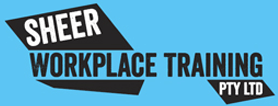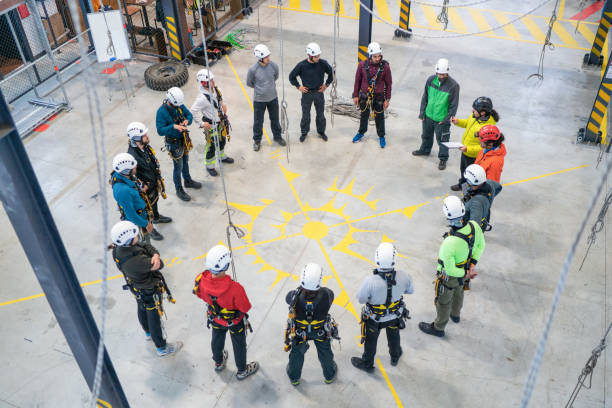Understanding the Risks of Working at Heights
Working at heights involves significant risks that require serious attention. Falls from heights remain one of the leading causes of fatalities and serious injuries in the construction industry and other sectors where elevation is a factor. It’s crucial to understand that any task that involves working at heights, be it on ladders, scaffolds, or elevated platforms, exposes workers to potential falls that can result in serious injuries or even fatalities.
- Recognizing the Hazards: The first step in managing risks is recognizing the hazards associated with working at heights. This includes understanding the potential for slips, trips, and falls, as well as the consequences of falling objects. Awareness of these hazards is key to developing effective safety strategies.
- Risk Assessment: Conducting a thorough risk assessment is essential. This involves identifying potential hazards, evaluating the likelihood of falls, and understanding the impact of such incidents. This assessment helps in tailoring specific safety measures to the unique needs of each work site.
- Environmental Factors: Environmental factors such as weather conditions, unstable surfaces, and visibility play a significant role in height-related risks. It’s crucial to consider these factors in both planning and daily operations to ensure a safe working environment.
- Human Factors: Human factors such as fatigue, lack of training, and complacency can significantly increase the risks of working at heights. Addressing these factors through training, supervision, and a culture of safety is crucial.
- Legal Implications: Understanding the legal implications of working at heights is important. Non-compliance with work health and safety regulations can lead to severe legal consequences for both employers and employees.
- Psychological Impacts: The fear of heights can affect an individual’s ability to work safely at elevation. Recognizing and managing these psychological impacts is an important aspect of overall safety.
- Continuous Monitoring and Review: Regular monitoring and review of work practices and safety measures are essential to identify and address any emerging risks or changes in the work environment.
Implementing Fall Prevention Measures
Effective fall prevention measures are critical in minimising the risk of falls. These measures often involve a combination of planning, safety equipment, and environmental modifications to ensure a solid construction and secure working environment.
- Code of Practice and Australian Standards
Adhering to the code of practice for working at heights and Australian standards is non-negotiable. These guidelines provide a framework for identifying and mitigating risks, ensuring that every measure taken is compliant and effective in reducing the likelihood of accidents.
- Safe Work Method Statements
Developing and implementing safe work method statements is crucial. These documents outline the procedures to be followed to minimize risks and ensure safe work practices.
- Edge Protection Systems
Installing edge protection systems like guardrails and toe boards helps prevent workers from falling or accidentally dropping tools and materials.
- Safety Signage
Displaying safety signage at strategic locations can alert workers to potential hazards and reinforce safe practices.
- Worksite Inspections
Regular worksite inspections by qualified personnel are necessary to identify potential hazards and ensure that safety measures are in place and effective.
- Emergency Response Plan
Having a well-defined emergency response plan ensures that workers know what to do in the event of a fall or other accidents, which can significantly reduce the severity of injuries.
- Involvement of Workers
Involving workers in safety discussions and decision-making can lead to more practical and effective safety measures, as workers often have firsthand knowledge of the risks and challenges associated with their tasks.
- Safety Drills
Conducting regular safety drills helps reinforce training and ensures that workers are prepared to respond effectively in an emergency.
Choosing the Right Fall Protection Equipment
Selecting appropriate fall protection equipment is pivotal in ensuring safety. This equipment ranges from full-body harnesses, safety nets, to personal fall arrest systems. Each piece of equipment must meet Australian standards to guarantee its reliability and effectiveness.
- Fall Arrest System and Edge Protection
A fall arrest system is designed to stop a fall before the worker hits the surface. Similarly, edge protection systems like guardrails are critical in preventing workers from accidentally stepping over the edge. Both systems play a crucial role in fall prevention.
- Harnesses and Lanyards
Choosing the right harnesses and lanyards that are comfortable, yet effective, is crucial. They must be suitable for the specific type of work and compliant with Australian standards.
- Inspection and Maintenance of Equipment
Regular inspection and maintenance of fall protection equipment are essential to ensure its reliability and effectiveness.
- Training in Equipment Use
Providing comprehensive training in the proper use, fitting, and inspection of fall protection equipment is essential for worker safety.
- Compatibility of Equipment
Ensuring that all components of the fall protection system are compatible and can work effectively together is crucial for the overall safety of the system.
- Rescue Equipment
Having appropriate rescue equipment on-site and training workers in rescue procedures is a vital part of a comprehensive fall protection strategy.
- Innovation in Safety Equipment
Staying updated with the latest innovations in safety equipment can provide more effective and comfortable options for workers, further enhancing safety standards.
Ensuring Proper Training and Certification
Training and certification are crucial in equipping workers with the knowledge and skills necessary to work safely at heights.
- Customized Training Programs: Develop training programs tailored to the unique needs of different roles within the construction industry.
- Accredited Training Courses: Offer training courses that comply with Australian standards and work health regulations.
- Work Positioning System and Safe Work Practices: Understanding how to correctly use a work positioning system and adopting safe work practices are fundamental skills imparted during training. These skills are essential for managing the risks of falls and ensuring safe ways to enter and exit elevated work areas.
- Hands-On Practical Training: Include practical training sessions for applying theoretical knowledge in controlled environments.
- Regular Refresher Courses: Conduct refresher courses to keep workers’ skills and knowledge up-to-date.
- Simulation-Based Learning: Utilize simulation tools to provide realistic scenarios for skill enhancement.
- Assessments and Certifications: Conduct rigorous assessments and provide certifications to validate workers’ proficiency.
- Training Record Keeping: Maintain comprehensive records of all training and certifications.
- Tailored Learning Materials: Provide tailored learning materials, such as guides and handbooks, for reference.
At Sheer Workplace Training, located in Brisbane, we provide comprehensive training that covers all aspects of safety when working at elevated levels.
Responding to Falls and Emergencies
Despite all preventive measures, it’s vital to be prepared for fall incidents and emergencies. This involves having a response plan that includes immediate medical assistance and rescue operations.
- Immediate Emergency Response Plan: Have a well-defined plan outlining specific actions for fall incidents.
- First Aid Training: Train a sufficient number of workers in first aid, including procedures for dealing with falls.
- Rescue Equipment and Procedures: Equip the workplace with appropriate rescue equipment and train workers in rescue procedures.
- Post-Incident Reporting and Investigation: Implement a process for reporting and investigating incidents to prevent future falls.
- Psychological Support: Offer psychological support for workers who have experienced or witnessed a fall.
- Communication with Emergency Services: Establish efficient communication channels with emergency services.
- Regular Emergency Drills: Conduct emergency drills to familiarize workers with response procedures.
- Feedback and Continuous Improvement: Encourage feedback for continuous improvement of emergency response plans.
- Minimise the Risk and Manage the Response: Being able to minimise the risk of falls and efficiently manage the response in the event of an accident is a critical aspect of working safely at heights. It’s not just about prevention; it’s also about being prepared for the worst-case scenario.
Mastering Work Safety at Heights: A Commitment to Health and Safety
Mastering work safety at heights goes beyond merely fulfilling regulatory requirements; it is integral to ensuring the health and safety of workers. At Sheer Workplace Training in Brisbane, our dedication to this cause is unwavering. We provide top-notch training and resources, focusing on equipping every individual who works at heights with the essential skills and knowledge for their safety and well-being.
Our approach to training is comprehensive and tailored. We understand that the construction industry and other sectors involving height work have diverse needs. Therefore, our training programs are customized to meet these varied requirements, ensuring that all aspects of safety and risk management are covered. We emphasize hands-on learning and the use of simulation-based scenarios, allowing trainees to apply their knowledge effectively in real-world situations.
Our commitment extends beyond compliance with safety regulations. We delve deep into comprehensive risk management, teaching workers how to identify, evaluate, and mitigate potential hazards. A key component of our training includes understanding and adhering to Australian work health and safety regulations, preparing our trainees not just to work safely but also to understand the legal aspects and implications of their roles.
We strive to create a culture of safety. This means engaging workers in safety discussions, empowering them to take active roles in maintaining a safe work environment, and understanding the psychological impacts of working at heights. Providing psychological support and strategies to manage these challenges is part of our holistic approach to safety training.
Continuous improvement and feedback are fundamental to our training methodology. We actively seek feedback from our trainees and collaborate with industry experts and safety professionals. This partnership ensures that our courses are always aligned with the latest in safety research and best practices.
Mastering work safety at heights is a critical element of workforce safety, and at Sheer Workplace Training, it is our mission. We invite you to join us in this commitment to safety. For those interested in our courses or who have any questions, we welcome you to contact us. Your safety is not just our priority—it’s our mission.



Leave a Reply